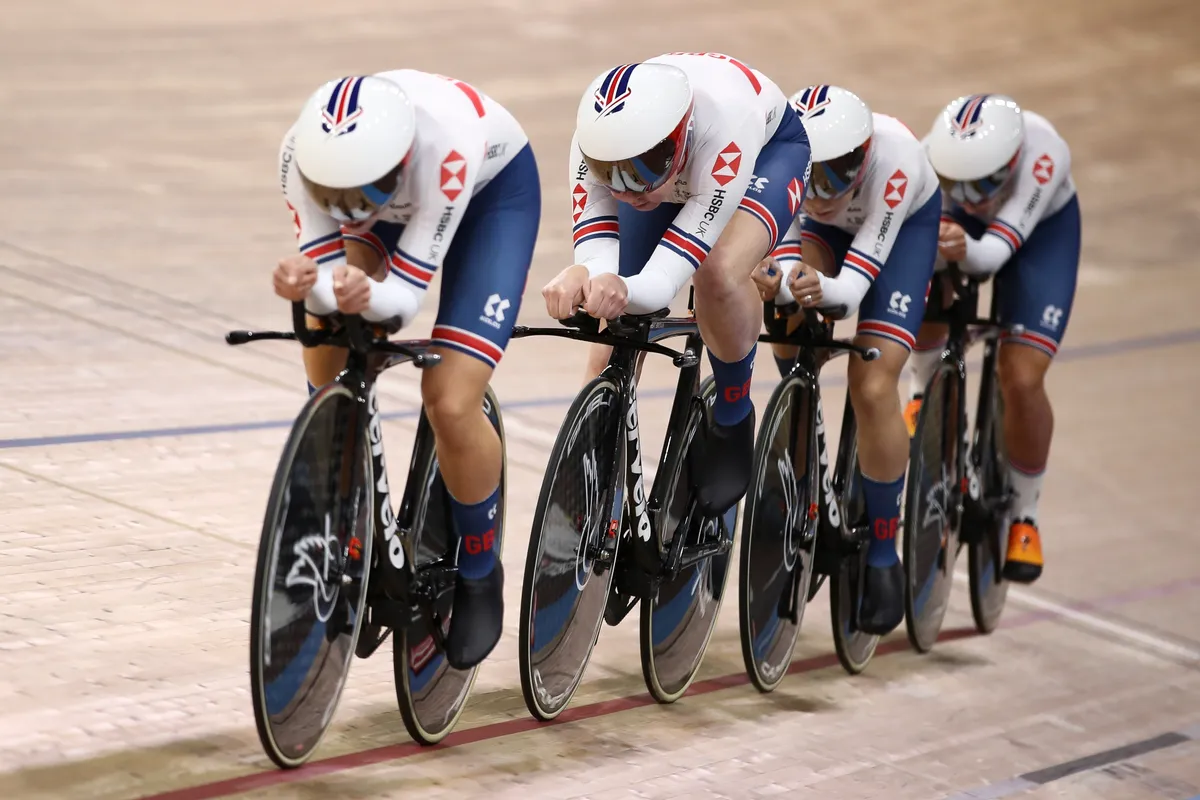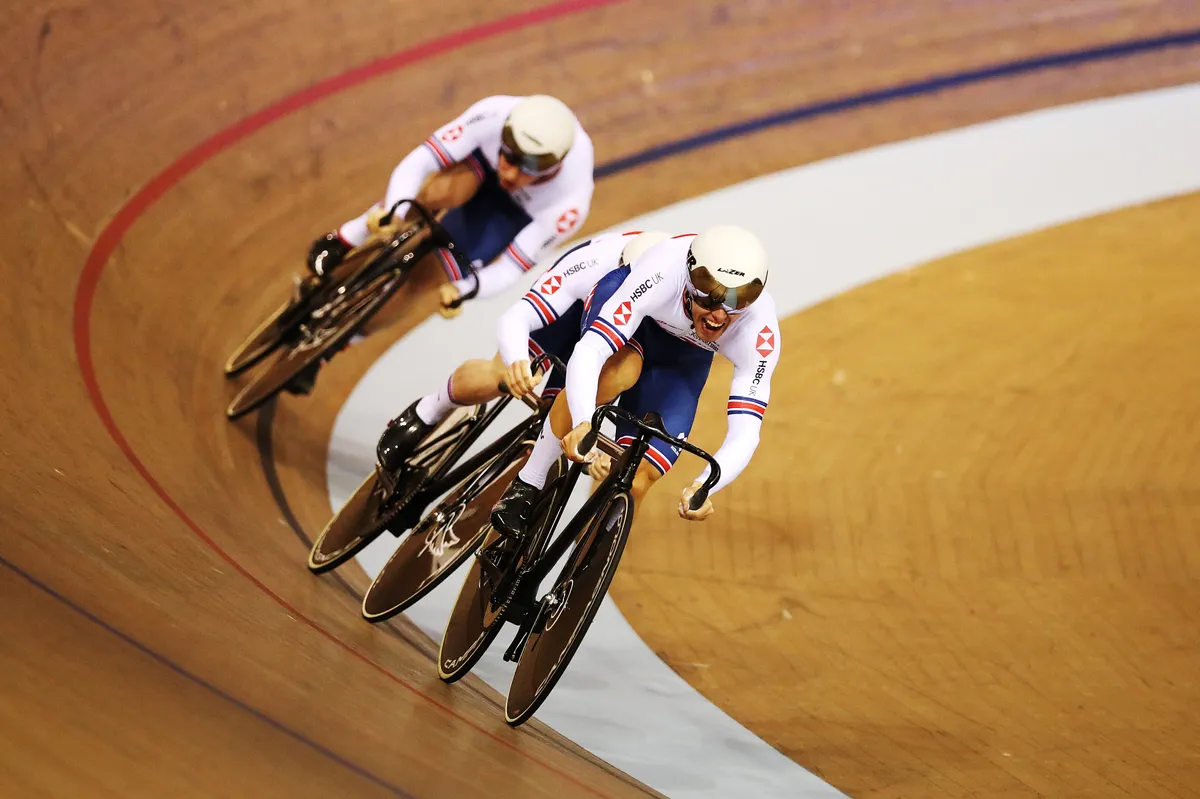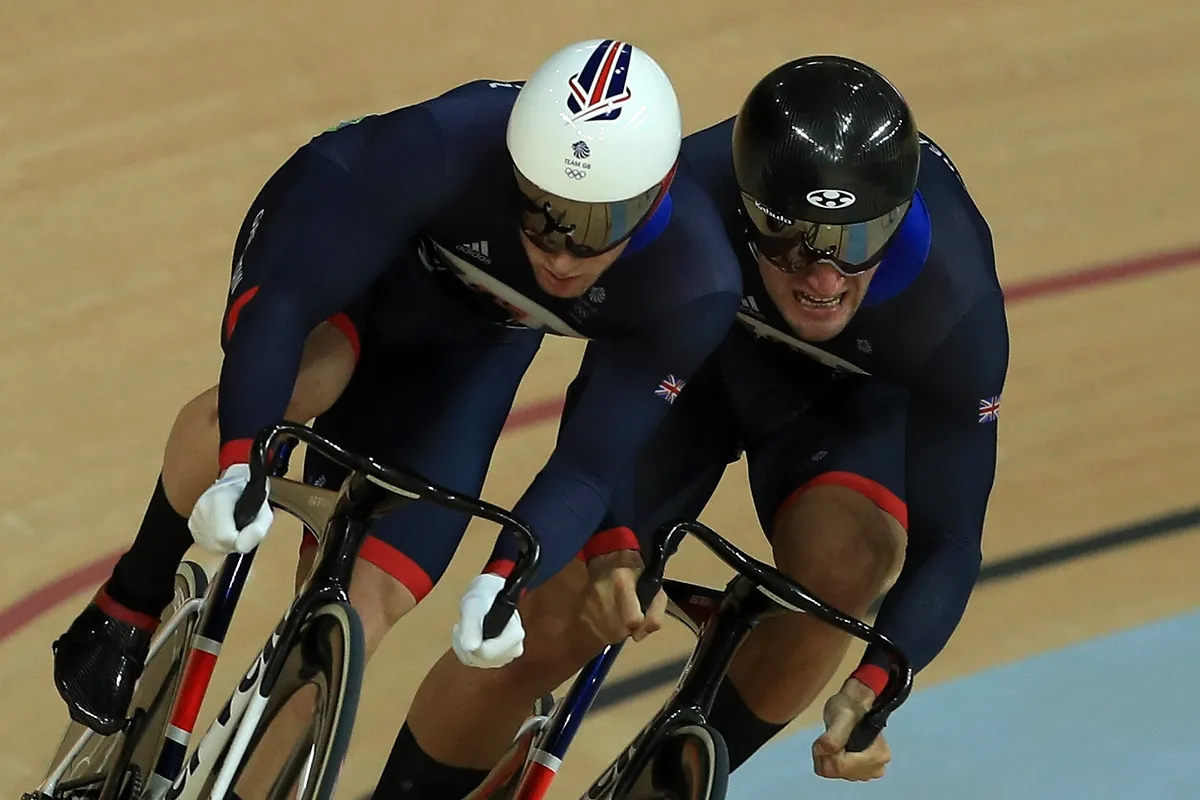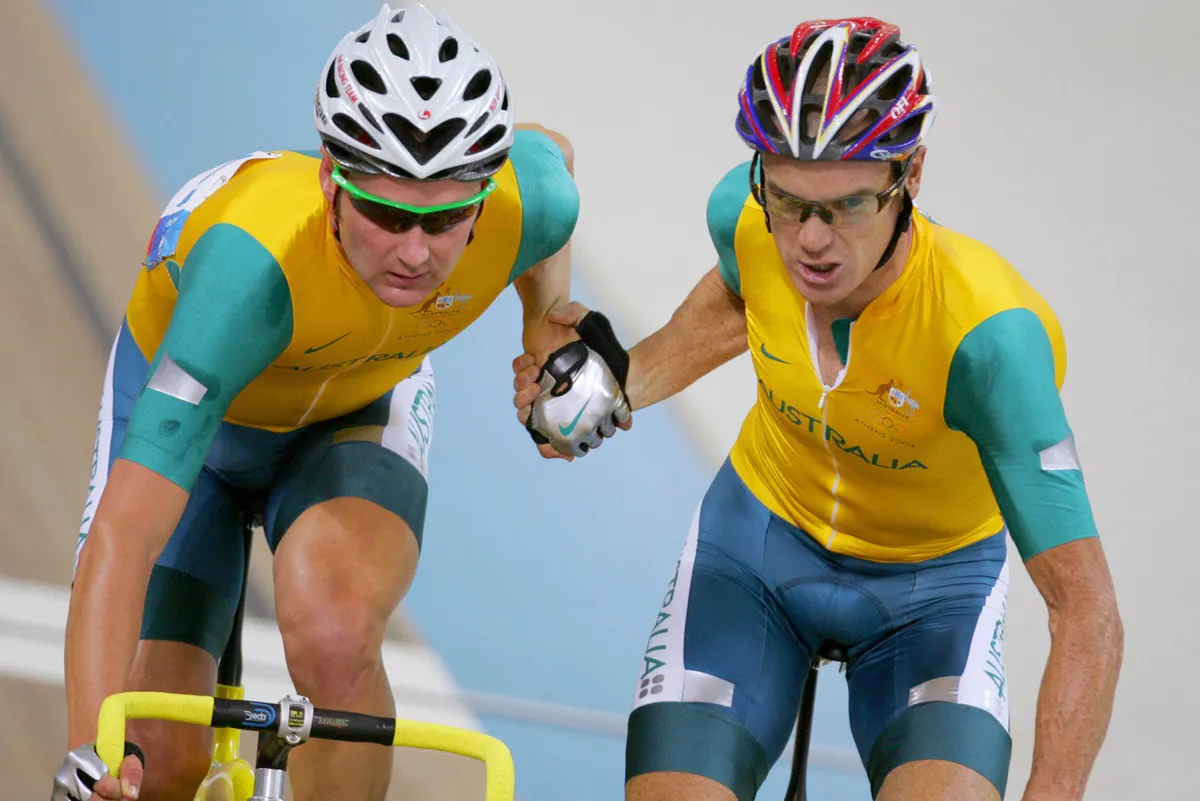Track cycling returns to the limelight in the second week of the delayed 2020 Tokyo Olympic Games, when the world’s eyes will turn to the medal action in the Izu Velodrome.
With at least one gold medal up for grabs on every day of track cycling action – and a total of 12 gold medals in all – there will be plenty to enjoy from the Olympic track cycling events.
There are six different events in all, split into men’s and women’s races: the team pursuit, omnium, keirin, madison, sprint and team sprint.
While track cycling aficionados follow the sport religiously, the beauty of the Olympics is that new and casual audiences can become affixed by the action too, largely thanks to round-the-clock TV coverage.
The same can, of course, be said of road or mountain biking at the Olympics, but some track events truly are a spectacle like no other.
So, if you're new to the sport or just need a track cycling refresher, here’s a closer look at those six events.
Team pursuit track cycling explained

A long-standing Olympic favourite, the men’s team pursuit will be raced at the Games for the 25th time. The women’s event is a more recent addition – this being the third Games at which it will be contested – and Great Britain is the reigning champion in both.
In fact, you have to go back to 2004 for the last time Great Britain did not win team pursuit gold at the Olympic Games.
The team pursuit involves two teams of four cyclists, racing 16 laps (4,000m) of the track, starting on opposite sides and there are two ways to claim victory.
The winner is the team that finishes the 16 laps fastest or the team that catches the other before the race is completed.
Times are taken on the third cyclist to cross the line, with no need for the fourth rider in each team to finish.
At the Olympic Games, the tournament is contested over three rounds. The qualifying round is a time trial, with only one team on track at a time. Only the top four teams can compete for the gold medal, with teams fifth and lower only able to reach the bronze final at best.
In the next round, the fastest team takes on the fourth fastest, and the second and third ride against each other – with the winner of each match-up progressing to the gold medal final.
The bottom four teams are also seeded against each other, and the two fastest teams not to reach the gold-medal final, contest the bronze-medal final.
In the finals, there are the two medal finals, as well as a placings final to determine who finishes fifth and sixth, and seventh and eighth.
Tokyo 2020 team pursuit dates
- Women’s team pursuit: Qualifying (Mon 2 August), Heats (Tue 3 August), Finals (Tue 3 August)
- Men’s team pursuit: Qualifying (Mon 2 August), Heats (Tue 3 August), Finals (Wed 4 August)
Team sprint track cycling explained

Jason Kenny bids for Great British Olympic history in the team sprint, when he looks to win the event for a fourth consecutive Games and become the country’s most successful Olympian.
The high-octane event is about all-out speed, with the men’s event incorporating teams of three riders over three laps, and the women’s two over two.
After an initial qualifying round to seed the teams, they then go head-to-head against each other for a place in the medal rounds.
Each rider on the team must lead the way for one lap, before peeling off for the rider behind to take over.
The final time is taken from when the final rider finishes.
Teams start on opposite sides of the track, with the two fastest winners of the semi-finals progressing to the gold medal race, and the next two fastest winners in the bronze medal race.
Tokyo 2020 team sprint dates
- Women’s team sprint: Mon 2 August
- Men’s team sprint: Tue 3 August
Omnium track cycling explained

Possibly the most complicated of the six events, the omnium is a multiple-race event, which has undergone plenty of changes over its recent history.
First introduced in 2012, this will be the third time the event has been raced at the Olympics but the first time in its current iteration.
Laura Kenny – Great Britain’s most successful female Olympian with four gold medals – is bidding to make it three wins from three in the women’s event.
Previously a six-event race, three of the previous events have been dropped and a new one added for the current iteration of the omnium.
The four races of the omnium are:
- Scratch race – mass start race over 40 laps for men and 30 for women, first to the finish wins
- Tempo race – raced over 40 laps for men and 30 for women. After the first five laps, the winner of each lap earns a point, and lapping the field earns 20 points. The winner of the race is the one with the most points after the set amount of laps
- Elimination race – every two laps, the last-placed cyclist is eliminated
- Points race – 100 laps for men, 80 for women, with points earned for the top-five finishers at sprints every ten laps, and double points for the final sprint, as well as 20 points for lapping the field
Riders score points according to their finishing places in the first three events (the points earned within the tempo race do not count overall), plus the points they earn in the final points race.
Tokyo 2020 omnium dates
- Men’s omnium: Thu 5 August
- Women’s omnium: Sun 8 August
Keirin track cycling explained

The keirin returns home for the 2020 Summer Olympics, having been born out of Japan for gambling purposes shortly after the Second World War.
It became an official Olympic event in 2000, and the women’s event was added in 2012.
Keirin literally means ‘racing cycle’, and the event sees riders follow a pace motorcycle for three laps, before another three laps unpaced.
The distances have changed from Rio 2016, which was 5.5 paced laps and 2.5 unpaced.
Another change from five years ago is the addition of a fourth main round – it was three in Rio.
The first round for both the men and women consists of five heats of six cyclists, with the top two in each heat progressing to the second round and the others going into the repechage.
In the repechage – four heats of five cyclists – the top two in each heat join the riders already qualified to the second round, with everyone else’s event over.
The second round is three heats of six cyclists, with the top four in each going through to the semi-finals.
It sets up two semi-finals of six riders each, from which the top three advance to the medal final.
The bottom three in each heat contest the seventh to 12th place ranking final, while the top three in each go wheel-to-wheel for the medals.
Tokyo 2020 Keirin dates
- Women’s keirin: First round heats and repechages (Wed 4 August), quarter-finals/semi-finals/finals(Thu 5 August)
- Men’s keirin: First round heats and repechages (Sat 7 August), quarter-finals/semi-finals/finals (Sun 8 August)
Sprint track cycling explained

The match sprint is possibly the most tactical of the six events, and a bit of a misnomer given that for much of the race the two riders on track are doing anything but sprinting.
Initially, the competition – which has extra rounds for this year’s Games – does begin at high-speed with a flying start 200m time trial.
The top 24 cyclists from qualifying are then seeded into 12 heats, from where the match sprints begin.
The match sprints are highly tactical battles whereby the riders start side-by-side and race over three laps of the track.
Much of the race is about trying to manoeuvre the other rider into a disadvantageous position before an extraordinary explosive burst of speed for the final 200m.
At the Olympic Games, the 12 winners of the first round go straight to round two, and the 12 losers go into the repechage – four heats, with three riders in each, from which the winners also move to round two.
Round two pairs 16 cyclists into eight heats, with the eight winners advancing to the next round and the losers going into the second repechage (four heats of two riders in each).
The 12 remaining riders contest six heats in the third round, with the six losers split into two heats into the repechage to form the quarter-finals.
From there begins the best-two-of-three-matches for each match-up, and the event is now a straight knock-out through to the medal finals.
Tokyo 2020 Sprint dates
- Men’s sprint: Wed 4 August – Fri 6 August
- Women’s sprint: Fri 6 August – Sun 8 August
Madison track cycling explained

The hand-slinging Madison race is back at the Olympic Games now that a women’s equivalent race has been added to the schedule (it was men-only in 2000, 2004 and 2008).
It means the carnage of the tag-team points race over 200 laps is back. All 16 teams are on track at any one time, with one rider from each team in action and the other waiting to be tagged in.
Teams score points by either lapping the field or winning sprints – which occur every ten laps, with points doubled for the final sprint.
To tag their team-mate in, they simply need to touch but very often handsling their opponent into the bunch so no momentum is lost by the changeover.
Tokyo 2020 Madison dates
- Women’s Madison: Fri 6 August
- Men’s Madison: Sat 7 August
